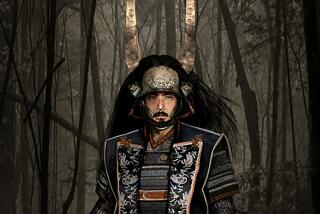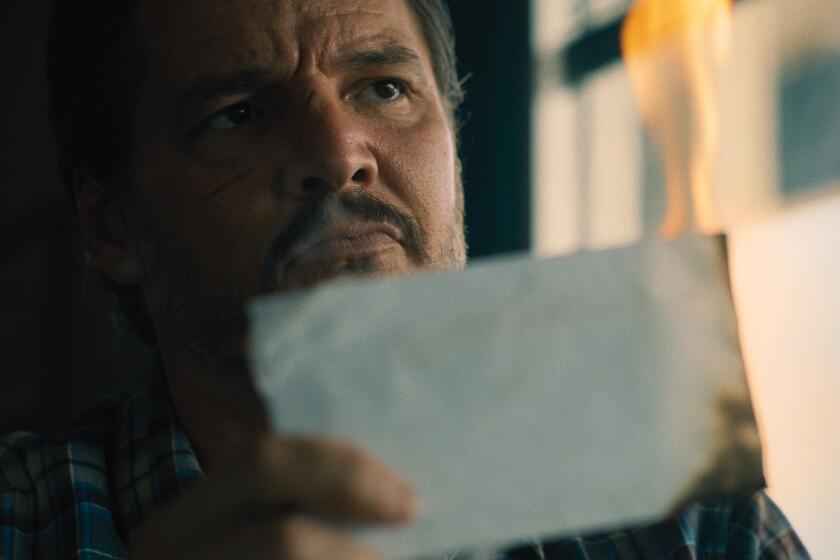MOVIE REVIEW : ‘Blood’ Fails to Illuminate the Insurgency
- Share via
On Feb. 26, 1936, 22 junior officers of the Japanese Imperial Army, in protest of the widening gap between the rich and poor during the Depression-era famine, led 1,200 men on a slaughter of Japanese elder statesmen and ministers. The officers demanded drastic political and economic reforms, and claimed to be acting in the sacred name of the Emperor, whom they believed was being shielded from conditions in his country by the men they had marked for death. The rebels were as naive as they were desperate.
Hideo Gosha’s “Four Days of Snow and Blood” (at the Little Tokyo Cinema 1) opens with a terse, masterful and accurate re-enactment of this insurgency. Under a steadily falling snow, the nine rebel squads burst into one mansion after another, rousing elderly men out of their beds only to shoot them down in front of their protesting wives. Once this bloody operation is over, however, both the rebels and the film itself are in trouble.
Gosha is a commanding director and a distinguished period specialist, but he hasn’t much to work with in Kazuo Kasahara’s disappointingly conventional script. It extols the idealism and heroism of the martyred rebel leaders without placing them in full historical context. There is no inkling, for example, that these fanatical emperor worshipers were intense, ultra right-wing expansionists.
The movie gives us a sentimental montage of the rebellion’s five key men day-dreaming of their wives and children when it would have made better use of the time in filling us in on the significance of how Hirohito was handling the crisis. (None of these young men, by the way, is any more distinguishable from each other than are their dreams of their families.)
Hirohito is in fact the absent star of this drama, his response to the crisis only reported. We couldn’t expect such a recently deceased Japanese monarch, once regarded as a living god, to be portrayed on the screen--surely this would be taboo. But that’s no excuse for not making clear that this crisis was the first true test of Hirohito’s strength of character, of his understanding that no matter how noble their motivations may have been, the rebels would have to be crushed quickly and firmly. (The irony is that the incident, from which Hirohito emerged the victor, provided him with the opportunity to steer the military away from war, a course he chose not to take.)
The whole bloody 1936 episode is shot through with mishaps, ironies and long-ranging consequences which the film doesn’t begin to suggest. (There’s a fascinating, detailed account of the rebellion in Edward Behr’s newly published “Hirohito.”) For its full meaning and significance to have emerged, “Four Days of Snow and Blood” should really have been done in the gritty pseudo-documentary style of “Battle of Algiers” instead of the opulent manner of the old-fashioned Japanese period picture.
The renewed interest in the character of Emperor Hirohito and the true role he played in his country’s destiny--indeed, in the national character and destiny of Japan itself--renders “Four Days of Snow and Blood” (Times-rated Mature) obsolete.
‘FOUR DAYS OF SNOW AND BLOOD’
A Shochiku release of a Shochiku-Fuji production. Executive producer Kazuyoshi Okuyama. Producer/Art director Yoshinobu Nishioka. Director Hideo Gosha. Screenplay Kazuo Kasahara. Camera Fujio Morita. Music Akira Senju. Editorial supervisor Tsukasa Kono. With Kenichi Hagiwara, Tomokazu Miura, Masahiro Motoki, Naoto Takenaka, Tetsuro Tanba, Tatsuya Nakadai. In Japanese, with English subtitles.
Running time: 1 hour, 54 minutes.
Times-rated: Mature.
More to Read
Only good movies
Get the Indie Focus newsletter, Mark Olsen's weekly guide to the world of cinema.
You may occasionally receive promotional content from the Los Angeles Times.







